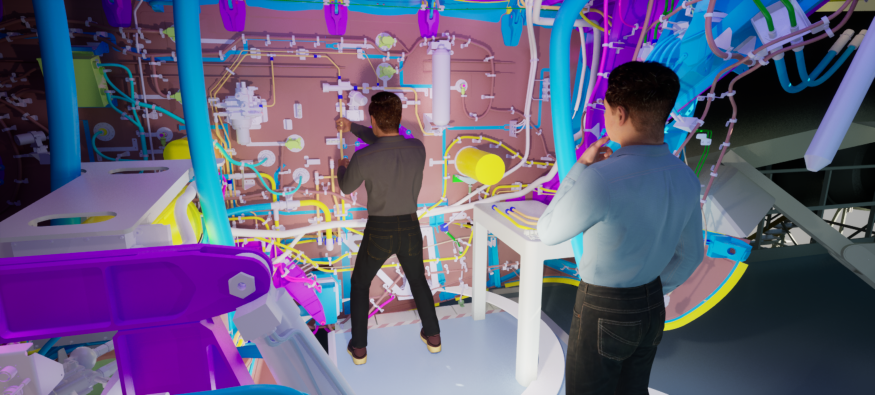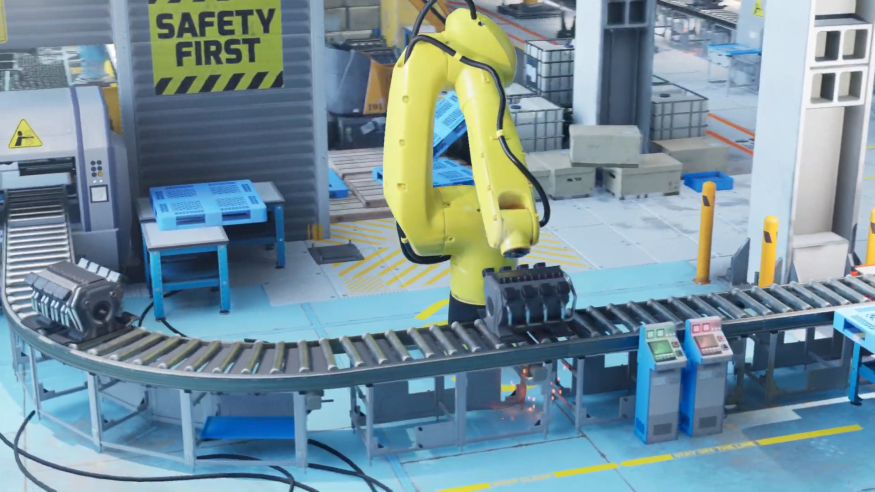Virtual Commissioning, a historic innovation in the industry, is a key challenge for companies in the sector. Virtualizing this stage of production offers numerous advantages. Over time, Virtual Commissioning can shorten lead times, reduce costs, minimize risks and ensure better product performance. Today, this industrial method is paired with new technologies such as virtual reality and the digital twin, offering a wider range of benefits.
What is Virtual Commissioning ?
Commissioning in industry
Commissioning is “the methodical approach aimed at ensuring that all the operational elements of a project work as they should” (source: SafetyCulture). In other words, it’s the implementation of a quality approach prior to the launch of an industrial system or product.
This quality approach is designed to compensate for possible failures and performance problems. It involves checking that all aspects of the machine, cell or production line are working together to produce the expected end result.
In short, the aim of commissioning is to meet the objectives, guarantee the expected performance of a new installation, and ensure its continuity and maintenance in the future.
Engineers must identify problems and then apply modifications. Commissioning saves an average of 20-30% on project costs. However, the industry has noticed some downsides.
On the one hand, commissioning is very time-, material- and human-intensive. On the other hand, commissioning comes too late in the project, limiting engineers in their verification work. The solution is to find problems at the earliest. That’s where virtual reality comes in.
Principle and definition of Virtual Commissioning
Virtual Commissioning uses 3D models to test capability, assess functionality and identify potential improvements. Virtual Commissioning uses digital twin technology, even before the system or machine is built. This solves the main problem of physical commissioning. The digital twin is a digital replica that mimics and predicts the behavior of the system or machine in question.
Likewise, the use of digital twins addresses the main challenge of commissioning in virtual reality : the human aspect. Indeed, certain tasks on machines or systems require the human hand. And it’s possible to miss out on problems linked to human-machine interfaces that will have to be resolved later, in post-construction, ultimately making the operation unprofitable.
To prevent this, the 3D model must be a perfect copy of the system or machine, with real-time updates. This is why digital twin is the right technology for Virtual Commissioning, which benefits the industry in many ways.
Benefits and advantages of Virtual Commissioning
Cutting lead times
One of the primary benefits of Virtual Commissioning is to shorten production times. Where physical commissioning takes place in post-production, engineers can virtually check a system or machine before it is built. By detecting problems at an early stage, several phases of modification are avoided, and delays are consequently reduced.
Reducing costs
Cost reduction is also one of the advantages of virtualizing commissioning. When commissioning is carried out physically, modifications are made to the finished product, requiring a new production phase and investment to ensure that the project meets the client’s expectations.
Virtual Commissioning saves money by operating virtually, in pre-production. Nothing is rebuilt, because nothing is built yet.
Preventing accidents
In addition, Virtual Commissioning helps to minimize risks on industrial sites. During verifications, engineers work on real equipment, sometimes on functional prototypes or final products. They therefore expose themselves to risks by interacting on production lines on an industrial site.
In the virtual world, however, there’s no risk of accident, since the work is carried out in a digital environment.
More powerful products
Unlike Virtual Commissioning, physical commissioning concentrates on verifying the operation of a system or machine. Digital twin technology, on the other hand, means that several design alternatives can be tested and explored, in order to observe how performance varies.
The result is more efficient products and, ultimately, higher production rates.
The contribution of VR to Virtual Commissioning
In addition to the digital twin, Virtual Commissioning can make use of Virtual Reality (VR) and Augmented Reality (AR).
VR enables better visualization and interaction, in 3D and through a headset, as if the engineer were standing in front of the real machine. As a result, design errors can be identified in very little time.
On the other hand, virtual reality is the ideal tool for remote Virtual Commissioning. The technology creates a virtual environment close to reality, which can support a team of professionals. They can then work in virtual reality and verify together from a distance, thus avoiding the need for frequent travel and the associated costs for companies.
Augmented reality (AR) also has a lot to contribute to this innovation. Its use is more relevant to the upgrading of a system or machine. In AR, digital elements are overlaid on the real world. During repairs, for example, information is displayed live in front of the operator’s eyes to guide him. AR speeds up the Virtual Commissioning process and prevents human error.
Virtual Commissioning in VR significantly impacts industry 4.0
Virtual Commissioning is a new revolution for the industry, enabling major reductions in costs, lead times and risks. This is further proof of the power of virtual reality and new technologies in this sector.
Innovation has become a prior issue for companies, so much so that new professions are emerging. Virtual commissioning is a case in point because it requires specialists in various areas: engineers, project managers, technology assistants, consultants and programmers.
More than ever, industry is constantly embracing virtual reality, with the aim of boosting performance and competitiveness.




